Reinforce your understanding of LPN/LVN nursing skills — and prepare for the NCLEX-PN® exam! Corresponding to the chapters in Foundations of Nursing, 9th Edition, this study guide provides a variety of exercises to help you review, practice, and apply nursing concepts and principles. Review questions make it easier to achieve the chapter objectives from the textbook, and critical thinking activities help you develop clinical judgment skills. Now with Next Generation NCLEX® (NGN)-style case studies and questions, this guide provides you with an effective study tool for the NGN exam.
Study Guide for Foundations of Nursing, 9th Edition
KSh 7,280.00
Reinforce your understanding of LPN/LVN nursing skills — and prepare for the NCLEX-PN® exam! Corresponding to the chapters in Foundations of Nursing, 9th Edition, this study guide provides a variety of exercises to help you review, practice, and apply nursing concepts and principles. Review questions make it easier to achieve the chapter objectives from the textbook, and critical thinking activities help you develop clinical judgment skills. Now with Next Generation NCLEX® (NGN)-style case studies and questions, this guide provides you with an effective study tool for the NGN exam.
2 in stock
Related products
-
Study Guide for Fundamentals of Nursing, 11th Edition
KSh 8,370.00Get the most from your fundamentals course with the Study Guide for Fundamentals of Nursing! Corresponding to the chapters in Fundamentals of Nursing, 11th Edition, this completely updated study guide helps reinforce your understanding of key nursing concepts through review questions, exercises, and learning activities. New Next Generation NCLEX®-style question types and brief case studies help you study and prepare for your exams — at the same time! With the purchase of a new text, bonus online skills checklists walk you through all of the book’s fundamental nursing procedures.
-
Myles Textbook for Midwives, International Edition, 17th Edition
KSh 5,642.00Written by midwives for midwives, Myles Textbook for Midwives has been the seminal textbook of midwifery for over 60 years. It offers comprehensive coverage of topics fundamental to 21st midwifery practice. Co-edited for the second time, by internationally renowned midwife educationalists, Professor Jayne E Marshall and Maureen D Raynor from the United Kingdom with a team of contributors from across the midwifery community it retains its clear, accessible writing style. Most chapters provide useful case studies, websites of key organisations and charities for individuals to access further information. Reflective questions at the end of each chapter as well as annotated further reading aid reflective learning and stimulate discussions relating to continuing professional development.
Key Features-
- The book covers key frameworks that govern midwifery practice, exploring ethical and legal frameworks that are essential to every accountable, autonomous, professional midwife.
-
- Includes employer-led models of supervision, vital elements of leadership and clinical governance that supports the provision of high quality maternity services and standards of midwifery practice.
-
- The concept of resilience is introduced for the reader to contemplate their personal contribution in creating an environment that is conducive to protecting the wellbeing of themselves and colleagues within the workplace.
-
- The text covers the UN 2030 Agenda for Sustainable Development, highlighting the importance of midwives as global citizens with common goals, and together they form a strong global community prepared to challenge social inequalities and take action to help end extreme poverty.
-
- Covers designing and implementing high quality midwifery care using evidence, policy and models of care. Highlights why a holistic and evidence-informed approach is necessary to achieve effective care for all. Working examples will help the reader to think critically about their own practice.
-
- For this edition several new chapters are introduced covering concealed pregnancy, fear of childbirth (tocophobia), care of the acutely unwell woman and end of life issues including rights of the fetus/neonate and ethical considerations.
Author InformationEdited by Jayne E. Marshall, FRCM, PFHEA, PhD, MA, PGCEA, ADM, RM, RN, Foundation Professor of Midwifery and NMC Lead Midwife for Education, School of Allied Health Professions, College of Life Sciences, George Davies Centre, University of Leicester, UK and Maureen D. Raynor, MA PGCEA ADM RMN RN RM, Senior Lecturer (Midwifery), De Montfort University, Faculty of Health and Life Sciences, School of Nursing and Midwifery, Leicester, UK -
-
Wong’s Essentials of Pediatric Nursing
Awarded first place in the 2017 AJN Book of the Year Awards in the Child Health category. Known for its accuracy, evidence-based focus, and engaging writing style, Wong’s Essentials of Pediatric Nursing, 10th Edition has been the #1 title in the pediatric nursing market since it first published in 1980! Thoroughly revised to equip you with the latest research and guidelines for treating children today, it encourages a whole-body approach by beginning with child development and health promotion to better understand the later chapters on specific health problems. A new chapter featuring all systems cancers provides comprehensive information in one place. Nursing Care Plans now incorporate additional case studies to personalize interventions and promote critical thinking.
A developmental approach clearly identifies key tasks, influences, and differences at each stage of a child’s growth to help students provide appropriate, individualized care for each child.
UNIQUE! Critical thinking case studies allow you to test and develop your analytical skills in a variety of clinical situations.
UNIQUE! Quality Patient Outcomes content in Nursing Care Management discussions for major diseases and disorders helps you understand how the care you provide directly impacts patient safety and promotes positive outcomes.
Updated genetic content in the Developmental and Genetic Influences on Children chapter addresses rapidly changing and important information as it relates to children in health and illness.
UNIQUE! Family focus includes a separate chapter on the role of the family in child health, family content throughout the text, and Family-Centered Care boxes that highlight information on patient teaching, home care, and incorporating the family in the child’s care.
UNIQUE! Translating Evidence into Practice boxes focus your attention on the application of research and critical thought processes to support and guide the outcomes of nursing care.
UNIQUE! Atraumatic Care boxes guide you through performing procedures in a caring manner, promoting more positive experiences for children, families, and nurses.
Drug Alerts throughout the text emphasize important drug information and point out potential safety issues.
An emphasis on wellness offers health promotion and injury prevention strategies for each age group.
Community Focus boxes provide resources and guidance on caring for children outside the clinical setting.
Nursing Care Plans, including Nursing Diagnoses, Patient/Family Goals, Nursing Interventions/Rationales, and Expec1ted Outcomes, provide you with a model for planning patient care.
Research Focus boxes help you remain abreast of current studies that impact pediatric nursing today.
Cultural content, integrated throughout the text and highlighted in Cultural Considerations boxes, exposes you to customs and beliefs of different cultures that influence child care, enhancing your ability to provide quality nursing care to ALL children and their families.
Nursing Tips throughout the text offer helpful hints and practical, clinical information of a non-emergency nature.
Nursing Alerts throughout the text provide you with critical information that must be considered in providing care.
UNIQUE! Emergency Treatment boxes serve as a quick reference in critical situations.
Nursing Care Guidelines boxes provide you with clear, step-by-step, detailed instructions for performing specific skills or procedures.
NEW! Updated content throughout, notably methods of measuring competency and outcomes (QSEN and others), ambiguous genitalia, pediatric measurements, guidelines, and standards as defined by the American Academy of Pediatrics, and clear definitions of adolescent and young adult, keeps you up-to-date on important topic areas.
NEW! The Child with Cancer chapter includes all systems cancers for ease of access.
NEW and UPDATED! Case Studies now linked to Nursing Care Plans to personalize interventions, while also providing questions to promote critical thinking. -
Critical Care Nursing: Diagnosis and Management 8th Edition by Linda D. Urden
Get a firm understanding and mastery of the unique issues and procedures involved in critical care nursing with Critical Care Nursing: Diagnosis and Management, 8th Edition. Praised for its comprehensive coverage and clear organization, this market-leading text offers a great foundation in the realities and challenges of today’s critical care unit that’s perfect for both nursing students and practicing nurses alike. This new edition also features enhanced integration of QSEN and interprofessional collaborative practice, plus expanded coverage of leadership, post-ICU outcomes and highly contagious infections. Revamped case studies, Patient Teaching boxes, Evidence-Based Practice boxes, Patient Safety Alerts, and other learning tools further develop your critical thinking skills and prepare you for success in high-acuity, progressive, and critical care settings.
UNIQUE! Nursing management plans of care feature approximately 35 NANDA-I nursing diagnoses to provide a detailed, ready-to-use, clinically current reference for safe, effective patient care.
Consistent organization within each body-system unit provides a systematic framework for learning and for CCRN and PCCN certification preparation. It also serves as a great reference for clinical practice.
Pharmacologic Management tables offer quick summaries of the drugs most often used in critical care.
NEW! Enhanced QSEN integration makes it easier to link text content to the various QSEN competencies through the addition of QSEN-related questions in case studies, retitled features and boxes, QSEN content icons, and highlighted QSEN information throughout.
UNIQUE! Integration of interprofessional collaborative practice incorporates the various IPEC competencies ― such as Values & Ethics for Interprofessional Practice, Roles & Responsibilities, Interprofessional Communication, and Teams & Teamwork ― into the text content and case studies.
NEW! Enhanced focus on core content directs readers’ attention to routine adult critical care situations and minimizes the attention given to issues treated by specialized facilities.
NEW! Revamped case studies feature updated scenarios and information to reflect the current “flavor” of high-acuity, progressive, and critical care settings ― with patients being seen in a variety of settings. These scenarios help readers “scaffold” learning and apply chapter content to true-to-life clinical situations.
NEW! Content on post-ICU outcomes has been added to chapters on therapeutic management and disorders to provide readers with a more holistic perspective on the critical care patient experience.
NEW! Expanded leadership content places a fresh focus on the emerging importance of nursing leadership to ensure optimal patient outcomes.
NEW! Added content on highly contagious infections has been incorporated into the chapter on sepsis to keep readers abreast of this ever-changing area of interest.
NEW! Links to 15 sample skills from Elsevier Clinical Skills give readers a foundation in mastering critical care skills.
NEW! Enhanced Patient Teaching boxes feature more specific and practical content for at-the-bedside patient care.
NEW! Additional animations have been added to the Evolve companion website.
NEW! Updated content throughout reflects changes in nursing, medical, and collaborative care of patients in high-acuity, progressive, and critical care settings. -
Mims’ Medical Microbiology and Immunology, International Edition, 7th Edition
KSh 5,642.00MIMS’ Medical Microbiology and Immunology is loved internationally for its thorough yet easy-to-follow coverage of microbiology, infectious diseases, and immunology as a dynamic interplay between microbes and host. Covering the fundamentals of these closely linked disciplines, MIMS’ takes a systems approach to elaborate on epidemiology, clinical presentation, pathogenesis, and diagnostic approaches, as well as treatment and infection control considerations, supplemented by case-based examples. Complex scientific and clinical concepts are explained clearly and simply with the help of illustrations and a range of accompanying online content. Students will come away with a deep understanding of topics and processes, and will return to this book for reference time and again.Key Features- Clear writing and easy-to-understand explanations – perfect for students learning to grasp the fundamentals of both microbiology and immunology
- User-friendly format with colour coding, key concept boxes, and dynamic illustrations for easy navigation
- Organised by body system – goes beyond the ‘bug parade’ to help you understand clinical context
Author InformationBy Richard Goering, BA MSc PhD, Professor and Chair, Department of Medical Microbiology and Immunology, Creighton University School of Medicine, Omaha, Nebraska.; Hazel M. Dockrell, BA (Mod) PhD, Professor of Immunology, Faculty of Infectious and Tropical Diseases, London School of Hygiene and Tropical Medicine, London, UK; Mark Zuckerman, BSc(Hons), MBBS, MRCP, MSc, FRCPath, Consultant Virologist and Honorary Senior Lecturer, South London Specialist Virology Centre, King’s College Hospital NHS Foundation Trust, King’s College London School of Medicine, London, UK; Peter L. Chiodini, BSc, MBBS, PhD, FRCP, FRCPath, FFTM, RCPS(Glas), Consultant Parasitologist, Hospital for Tropical Diseases, London and Honorary Professor, London School of Hygiene and Tropical Medicine, London, UK -
Nelson Textbook of Pediatrics_vol 1
KSh 12,000.00The worlds most trusted pediatrics resource continues to provide the most authoritative coverage of the best approaches to care in this streamlined new edition. With two new editors, extensive updates, and expanded online features, youll have the well-rounded, up-to-date guidance you need to offer your patients the very best. ? Stay current on recent developments and hot topics such as melamine poisoning, long-term mechanical ventilation in the acutely ill child, sexual identity and adolescent homosexuality, age-specific behavior disturbances, and psychosis associated with epilepsy. ? Tap into substantially enhanced content with world-leading clinical and research expertise from two new editors Joseph W. St. Geme III, MD, and Nina F. Schor, MD, PhD who contribute on key subspecialties, including pediatric infectious disease and pediatric neurology. ? Manage the transition to adult healthcare for children with chronic diseases through discussions of the overall health needs of patients with congenital heart defects, diabetes, and cystic fibrosis. ? Recognize, diagnose, and manage genetic conditions more effectively using an expanded section that covers these diseases, disorders, and syndromes extensively.
-
Hutchison’s Clinical Methods International Edition, 25th Edition
KSh 6,370.00Hutchison’s Clinical Methods, 25th International Edition, offers comprehensive guidance on patient assessment, clinical examination, and diagnostic skills, essential for medical students and practitioners worldwide.
Sir Robert Hutchison first published his textbook on Clinical Methods in 1897 and this latest edition maintains its reputation as the go-to guide to learn the core skills every clinician needs in their everyday practice.
Medical students and doctors in training will find essential guidance to taking a full history, examining a patient and interpreting the findings. They will learn the art of understanding, contextualising, communicating and explaining, with the doctor-patient relationship firmly at the centre of their practice. These skills remain essential for every doctor, in addition to modern investigative methods.
The book covers basic principles, different patient groups and all the main body systems. Each chapter includes relevant clinical methods and offers guidance for appropriate investigations. New methods and investigations are incorporated into established patterns of clinical practice to offer a fully integrated approach.
This award-winning textbook remains as relevant today as ever and will be treasured by doctors at all levels of training and practice as an outstanding source of learning and reference.
Key Features-
- All chapters carefully reviewed and updated to reflect modern practice
-
- Written by experts in their field and reviewed by an International Advisory Board – content is relevant to a wide international readership including in the Indian sub-continent, the Middle East and Africa
-
- Covers all the main body systems, including the core areas of respiratory, cardiological, gastrointestinal, neurological and locomotor systems
-
- Text organised by system and problem to aid navigation
-
- Chapters can be read individually, to avoid duplication and need for cross-referencing
-
- Tabulated information and diagrams for clarity and conciseness
-
- Tailored to student needs but suitable for doctors at all levels of training and practice
-
- Winner of multiple awards, including the BMA book awards
-
- New appendix describing the clinical features of COVID-19
Author InformationEdited by Michael Glynn, MA, MD, FRCP, FHEA, Consultant Physician, Gastroenterologist and Hepatologist, Barts Health NHS Trust; Honorary Senior Lecturer, Barts and the London School of Medicine and Dentistry; Former National Clinical Director for GI and Liver Diseases, NHS England and William M Drake, DM FRCP, Consultant Physician/Reader in Medicine, Department of Endocrinology, St Bartholomew’s Hospital, London, UK -
-
Ophthalmic Nursing
KSh 3,500.00The book is, primarily intended for use by the students undertaking nursing course and the nurses engaged in the care of eye patients. It may also be helpful to nurse-tutors, ward sisters and all those involved in teaching the ophthalmic speciality to nursing students.

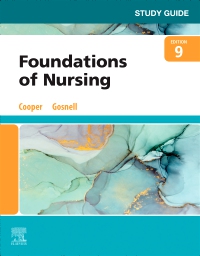
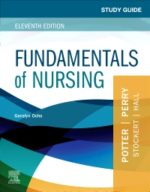



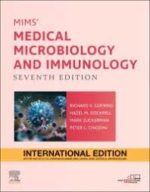
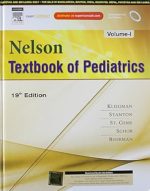
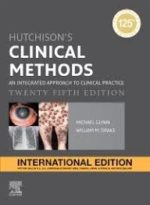
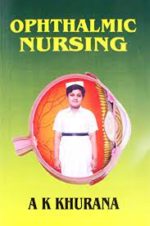
Be the first to review “Study Guide for Foundations of Nursing, 9th Edition”